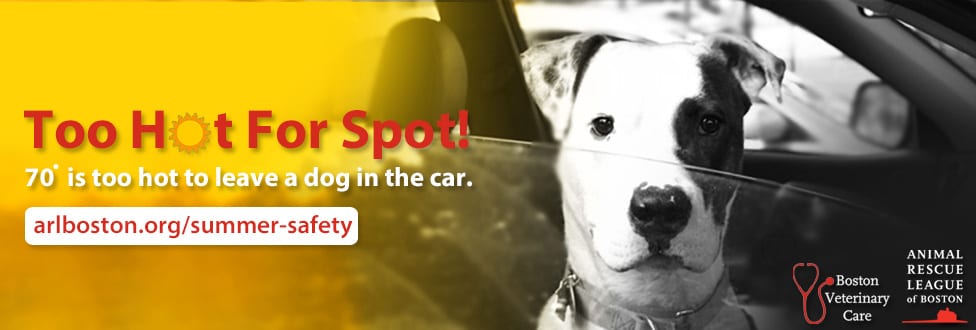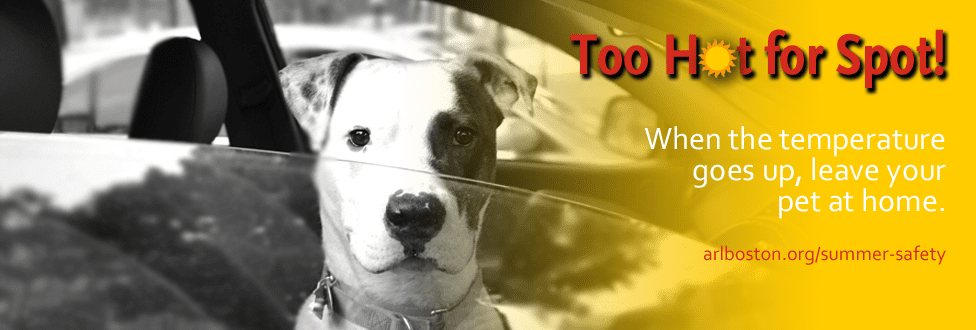Watch & Share: It’s TOO HOT FOR SPOT
Leaving a pet alone inside a hot car can have dangerous consequences
To raise awareness for this HOT animal welfare issue, the Animal Rescue League of Boston (ARL) and Boston Veterinary Care ask our followers and the media to share important information about the dangers of leaving pets in parked cars during the warm summer months.
Pets don’t sweat like humans do and cannot cool their bodies efficiently in hot temperatures. Even when the outside temperature is 80 degrees, the inside of a car can heat up to more than 120 degrees in just minutes – even with the windows cracked! That’s why leaving your pet inside of a hot car is the most common cause of deadly heat stroke.
In following video, “Too Hot for Spot® – Dangers of Hot Cars for Pets”, ARL’s shelter animals explain the risks of leaving your pet alone inside a parked car.
Click the “play” button below to watch:
Spot a pet alone in a parked car? Follow these 3 steps:
- Take down the car’s make, model, and license plate number.
- Ask nearby store managers or security guards to make an announcement to find the dog’s owner.
- If the owner can’t be found, call the non-emergency number of your local police department or Animal Control Officer.
Help us spread the word about this HOT summer safety issue! Stop by ARL’s shelters in Boston and Brewster this Summer and pick up a Too Hot for Spot car magnet! A donation is appreciated by not required.
SPECIAL THANKS to our Too Hot for Spot media sponsor Animal Hospital of Orleans and our media partners Cool 102, WBZ 1030, NECN, WEEI-FM, WEEI-AM/ESPN, and WRKO-AM.







